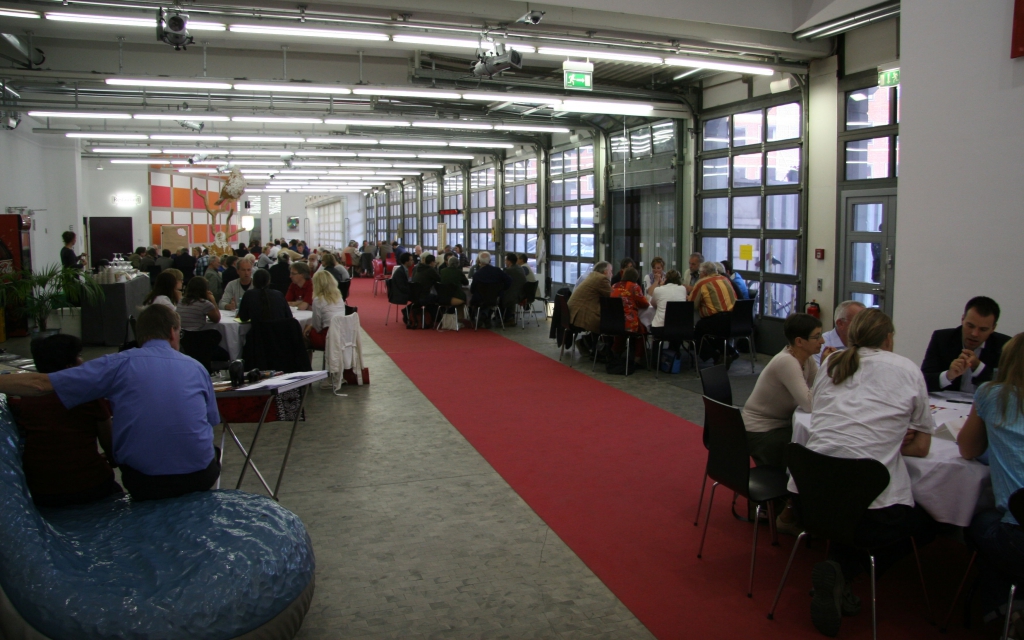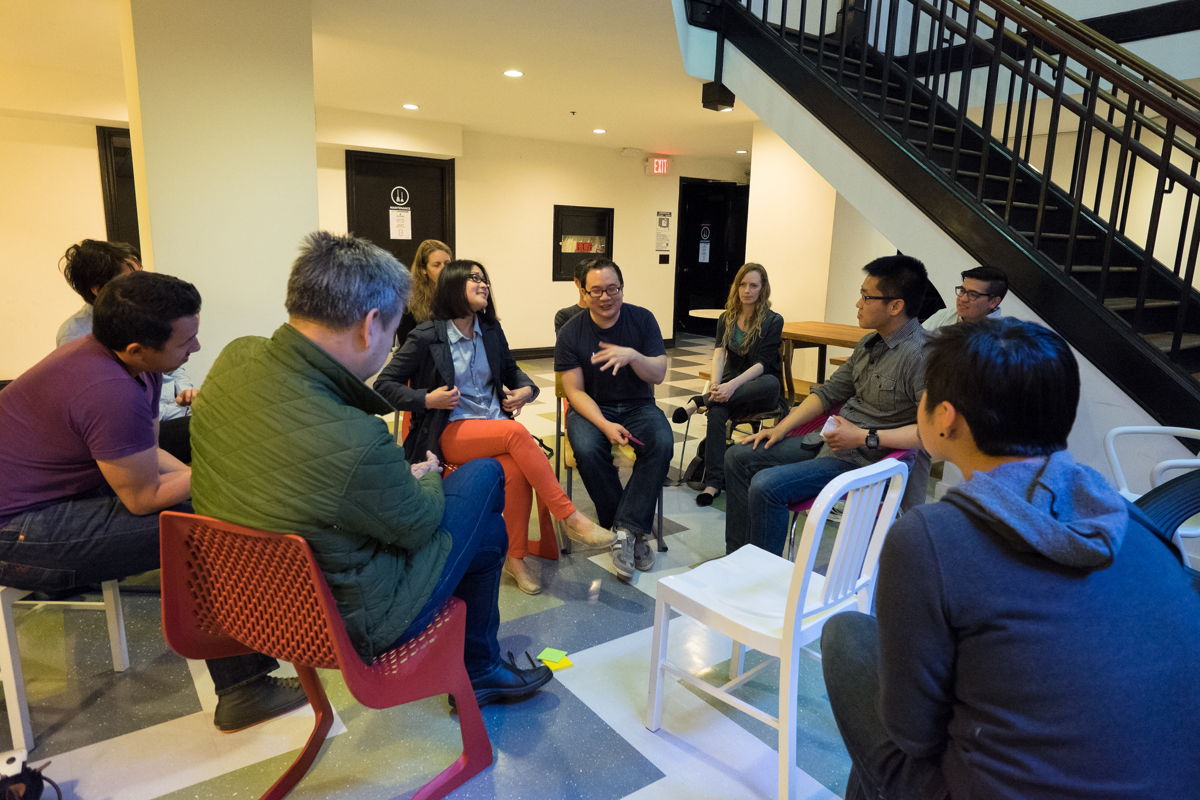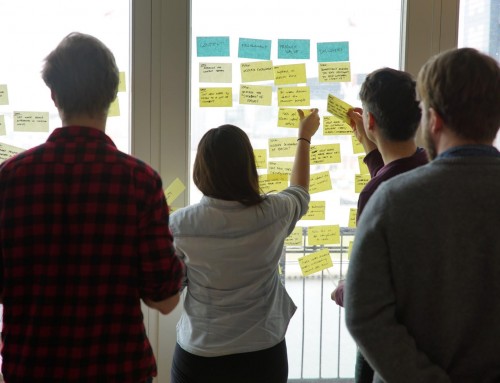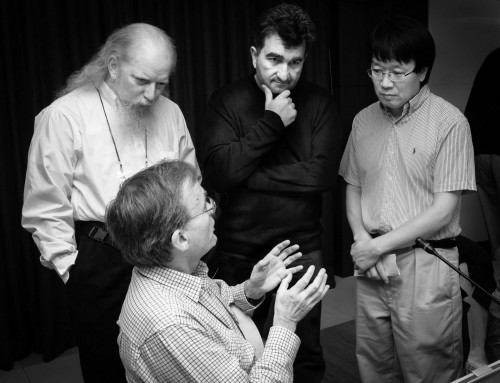Wisdom Council
Description of Wisdom Council
What is a Wisdom Council?
Wisdom Council is a facilitation format I use frequently. Wisdom Council is a large group (500+) facilitation — e.g. for business and non-profit organisations, government agencies, towns, cities, and nations — to address and solve difficult issues together.A Wisdom Council is a one-time, randomly-selected group of stakeholders who produce a consensus statement which is made available to the larger group for further dialogue and action. Wisdom Councils are most powerful when they are done periodically.
It is originated by Jim Rough in the early 1980’s, consulting with mill workers in Northern California.
Using random selection and Dynamic Facilitation, the Wisdom Council brings together a wide diversity of perspectives to creatively address the issues that affect everyone. By repeatedly creating a “microcosm” of the larger whole, and providing feedback to the larger system, a system-wide conversation is started.
How does a Wisdom Council work?
On a regular basis, i.e. every three to six months, a small group of stakeholders (8-12 people) out of the large group is randomly selected to meet for a few days. This group identifies key issues, works on them creatively, and develops a unanimous message.
Crucial for the Wisdom Council process is the way of problem resolution. Jim Rough himself called it "Choice-creating". In choice--creating diverse people address a real big issue collaboratively and creatively by seeking for win/win breakthrough answers. In choice-creating people speak with emotions, they are authentic — no roles, no representatives, no guidelines. Choice-creating is not about being objective or neutral. The progress happens through shifts and breakthroughs. The group "creates the choice" rather than "makes a decision".
Dynamic Facilitation's 4-Poster technique guides the conversation into: (1) statements, (2) solutions, (3) concerns, and (4) data.
The final outcome of choice-creating is a thoughtful unified position.

Choice-creating is similar to dialoguing in that people explore topics open-mindedly and open-heartedly, yet unlike many forms of dialogue it helps groups address practical problems and reach specific conclusions. Choice-creating is similar to deliberation in that the result can be a thorough examination of a practical issue, including pros and cons of various solutions; yet unlike deliberation, choice-creating uses a non-linear and open-ended process for its in-depth examination of an issue or topic.
When finished, the findings of the Wisdom Council are presented back to the larger system as "Statements of the People.”
This message has symbolic authority as a voice of everyone, which is presented back to the whole system.
Everyone is invited to hear the statements, reflect on them with others in small groups, and report back their own perspectives on the findings. This participatory presentation sparks a larger conversation into the community that draws out differing views and expert opinions.
Subsequent Wisdom Councils are free to choose their own issues. Each new Wisdom Council may follow up on previous conclusions, monitor actions, or modify the previous message. At the same time, the repeated iterations tend to build upon what was done previously. Over time, the whole system evolves positions that most all support.
Actions happen voluntarily by individuals or through the normal channels, which might include standing committees, management, or elected officials.
This on-going process serves to highlight the creative contribution of diverse perspectives while developing collective intelligence and a shared sense of the common good.
Rules of Wisdom Council
There 12 principles in the Wisdom Council process:
- The Wisdom Council is chartered by the whole system (“We the People.”) — Just an ordinary group of people can initiate a Wisdom Council.
- Each Wisdom Council is a microcosm of the whole system. — A Wisdom Council is a randomly selected group of stakeholders from the system. It’s not self-selected, elected, or appointed.
Each person speaks only for him or herself and does not represent any subgroup like a particular sex, race, religion, special interest, or geographical area. - Each Wisdom Council selects and frames the issues it addresses. — If the issue is chosen, it's a Creative Insight Council.
- The process is non-coercive. — No one is required to be on the Wisdom Council, nor does the Wisdom Council’s results have any official power. This process is entirely safe, just adding a new whole-system, creative conversation.
- A Wisdom Council does not take decisions, the members are “choice-creating”, they find collaboratively and creatively unanimous, thoughtful, conclusions.
- Each Wisdom Council determines a unanimous message. — The message has three parts (1) a new framing of the issue; (2) a solution strategy; and (3) a group story of how the group achieved these results.
- The Wisdom Council message is presented to the system in a community meeting. All people in the system are invited to hear the presentation and participate in the meeting, which is face-to-face and via TV and the internet. Once the Wisdom Council finishes its short presentation, all are invited to participate in small group conversations.
- The community reflects. — During the community meeting, people are given the chance to express the level to which they resonate with the Wisdom Council’s message. All can see the extent to which everyone is together on this issue.
- The community engages in a follow-up whole-system conversation. — Between Wisdom Councils, people consider the message, the process, and the actions required. They evolve ideas and plans forward.
- The Wisdom Council is all-inclusive. — If everyone knows about the Wisdom Council and that he or she may be selected, attends the community presentation, and continues to converse about the issues, then whole-system unity can evolve. Everyone is invited to participate. Its power comes from everyone realizing that practically the entire system is in unity about a chosen issue.
- The Wisdom Council is ongoing. — Periodic Wisdom Councils continue indefinitely. To the extent everyone pays attention, it is a structural addition to the system that can be initiated by any group of well-meaning people.
- The Wisdom Council is safe. — The Wisdom Council makes no direct changes to the existing system. All change happens voluntarily through normal channels like management, elected leaders, government, and individual actions, etc..
When to use Wisdom Council
- Large-group facilitation (500+) is needed - Technique works in face-to-face coaching as well..
- A wide diversity of perspectives should be brought together.
- Creatively issues that affect everyone should be addressed.
Facilitator Role
See the role of dynamic facilitator:
- Supports the creative process of each person in the group (listening deeply and appreciatively to each contribution).
- Listens deeply, and creates a space where each participant can be deeply heard.
- Provides empathy, respect, and support for each participant’s contribution.
- Values each participant's contribution.
Further Readings
: Eugene Kim, Bamboo Ceiling Fishbowl • SPD Schleswig-Holstein, via flickr.com, .







Leave A Comment